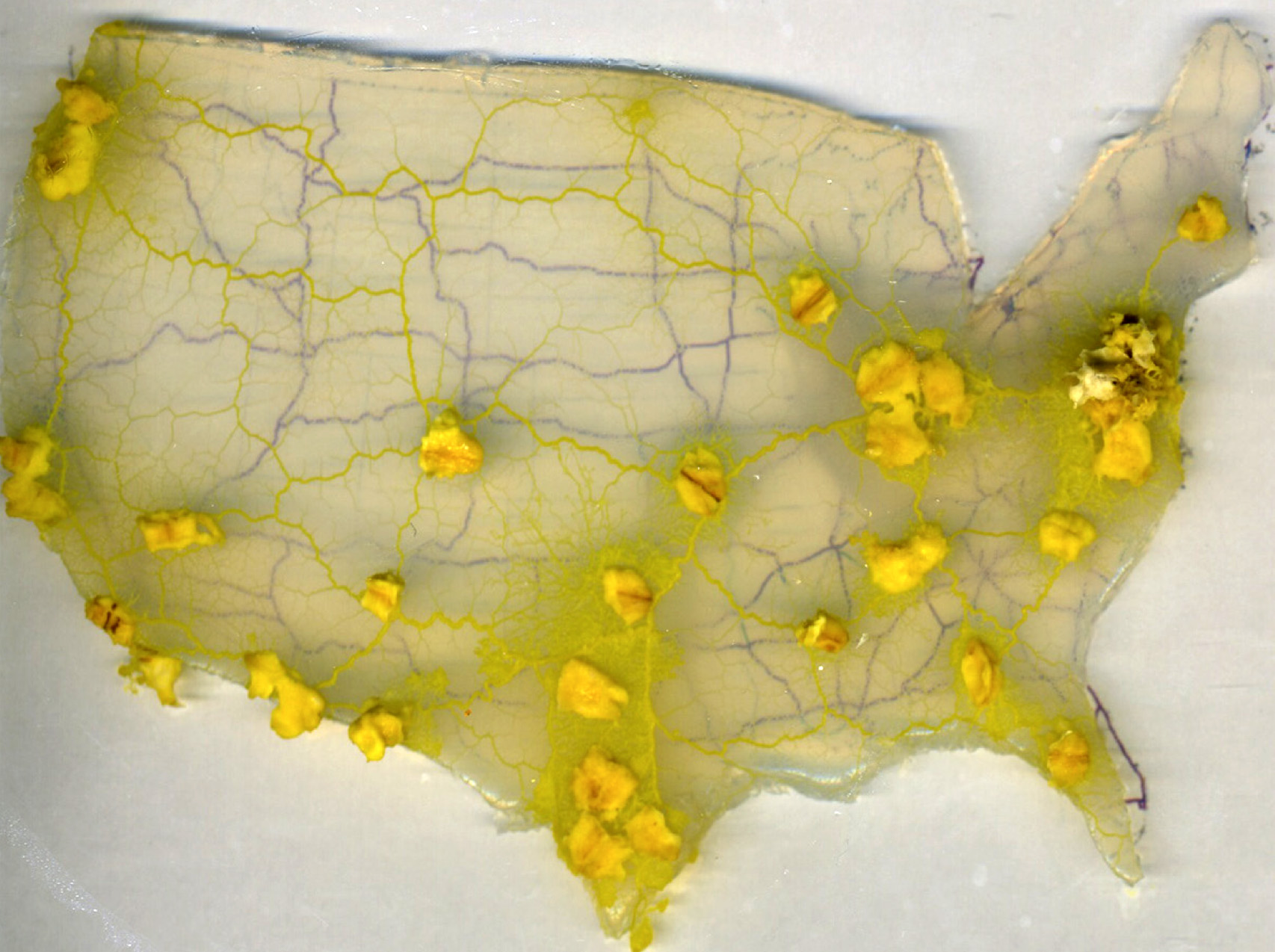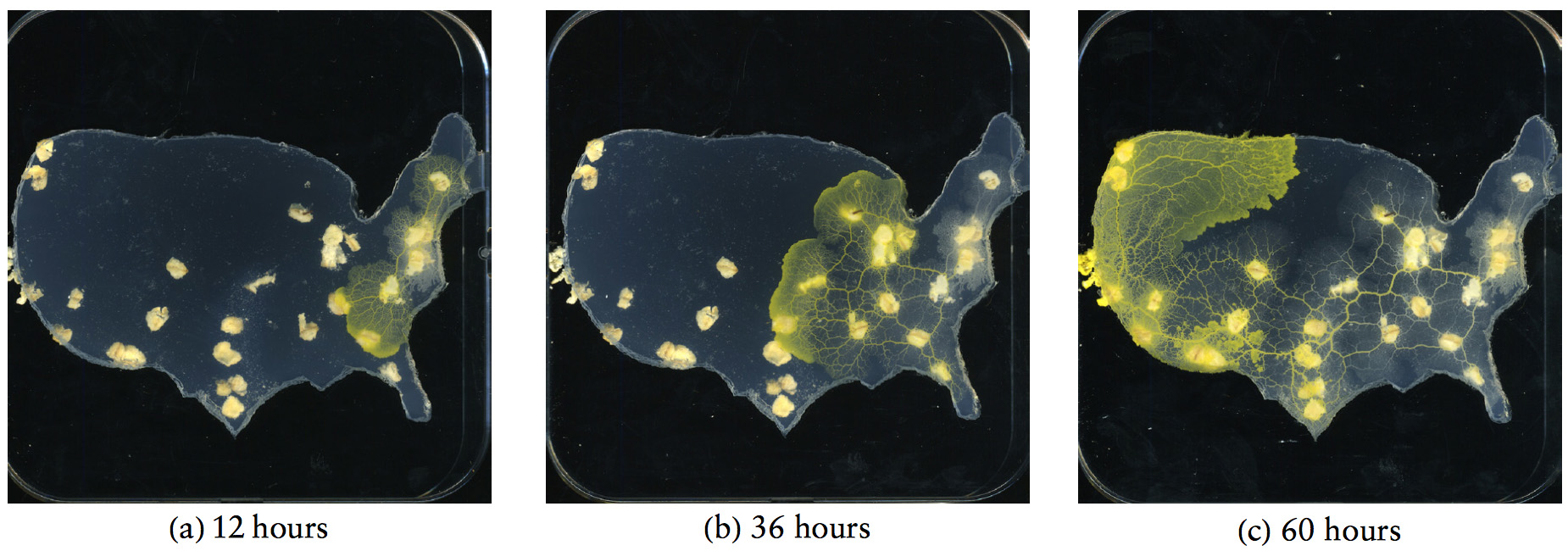Can a slime mold solve the traveling salesman problem without a digital computer? From the article's abstract:
The plasmodium phase of Physarum polycephalum is a champion amongst living creatures used in laboratory prototypes of future and emergent computing architectures. A wide range of problems from computational geometry and logic can be solved by this cellular slime mold. A typical way to perform a computation with the slime mold is to represent a problem’s data as a spatial configuration of nutrients and allow the slime mold to span the nutrients with its protoplasmic network. The architecture of the network represents a solution to the problem. We use a similar approach and exploit foraging behavior of P. polycephalum to imitate the formation of the United States transport network in laboratory conditions. Major urban areas are represented with rolled oats, the plasmodium is inoculated in one urban area, we wait until all oat flakes are colonized by the plasmodium, and then the protoplasmic network developed by the plasmodium is analyzed. The slime mold’s networks are compared with the interstate network and the networks are analyzed in terms of proximity graphs.
Source: Andrew Adamatzky and Andrew Ilachinski (2012) Slime Mold Imitates the United States Interstate System.

